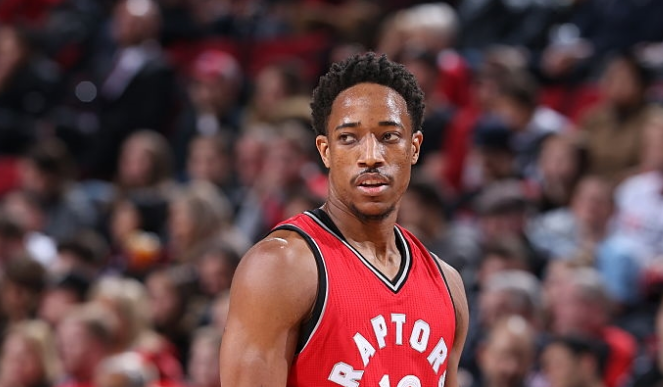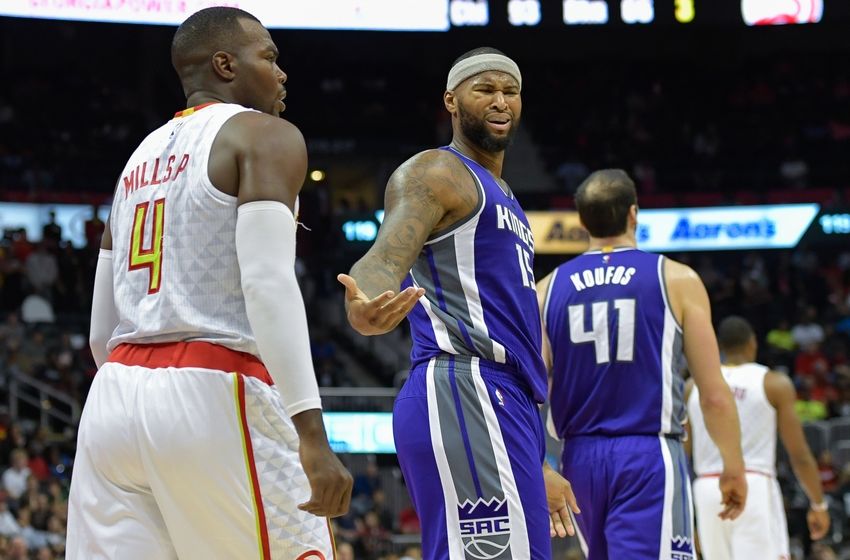The Toronto Raptors’ late game offense against the Boston Celtics was a microcosm of their core offensive principles throughout the season. According to NBA.com, the Toronto Raptors rank 2nd in pick and roll frequency, only trailing the Phoenix Suns. Somehow, the Raptors were able to increase that volume late in the fourth quarter, which allowed them to take advantage of stark differences in personnel.
Within the final six minutes of the fourth quarter, the Raptors ran 8 pick and rolls, 7 of which directly created an advantage that the Raptors capitalized on to score.
The first was a Weave Pick and Roll, which the Raptors refer to as Swing Fist.
Over at Raptors Playbook, I compiled several minutes of film that shows the Raptors running this same action over the last couple years.
Its simplicity is also what makes it effective, as it forces eventual on-ball defenders into trailing the pick and roll. To combat that scenario and avoid indecisiveness on the defensive end, resulting in crucial miscommunications, some teams will switch wing defenders above the arc just as Boston would eventually do.
The weave action forced the Celtics to switch Jae Crowder off of DeRozan to avoid trailing the screen. This put a notably inferior defender, Gerald Green, onto DeRozan. While he was able to re-establish defensive position, Green was baited into fouling DeRozan on one of his patented pull-up mid range jumpers.
The second important aspect of the Raptors pick and roll attack against the Celtics was their spacing on side ball screens. In both featured instances, the Raptors drew two defenders on the ball, forcing indecisive Celtic defenders into uncomfortable situations.
The first side pick and roll had DeRozan freeze Horford with a quick side-step fadeaway jumper along the baseline. Like many of DeRozan’s shots in the mid range, there was a high degree of difficulty. However, relative to DeRozan’s success rate and usual shot difficulty, this was a solid enough look. Also note that even if DeRozan missed, Marcus Smart was unsuccessful in tagging Valanciunas’ roll to the rim, leaving the 7-footer unattended and in prime rebounding position if a miss was forced, something which was present throughout the game that allowed Valanciunas to record 11 offensive rebounds.
The second pick and roll heading towards the sideline also drew two defenders on the ball, with Joseph taking the attention of both Horford and Thomas after Valanciunas set a solid screen. This forced Olynyk to prepare and tag Valanciunas and attempt to box him out, producing a scenario where two weakside defenders became responsible for three offensive players. Lowry, seen lurking in the clip, noticed this and in cerebral fashion was able to relocate and fill above the arc for a clean catch. Again, for most offensive players, this shot probably classifies as one with a high degree of difficulty, but for Lowry it was taken in the area of the floor where he is most comfortable and cans the spot up jumper.
The third and final notable aspect of the Raptors’ effective pick and roll offense that was showcased late against the Celtics was probably their most important. The decision to attack Thomas as the screener’s defender in pick and rolls set the table for a lot of their offensive possessions down the stretch.
The Raptors, specifically DeRozan and Joseph, engaged in four pick and rolls late in the fourth quarter that were designed to attack Thomas. In two of those pick and rolls, DeRozan was able to get Thomas to switch onto him.
The first switch, while DeRozan missed, caused the Celtics’ defense to panic so much that Horford completely abandoned his defensive assignment to provide help for Thomas along the baseline. This allowed for Valanciunas to duck in and seal off the backside help from Olynyk to grab the offensive rebound and draw a foul, which lead to two made free throws.
The second was more a conventional DeRozan conversion, as he posted up the smaller Thomas and was able to rise above him for the jumper.
The two instances in which the Raptors couldn’t force Thomas to switch onto DeRozan, they were still able to convert offensively. The first was a Raptors Ram (screen the screener) pick and roll, which theoretically would disallow Thomas from hedging out to DeRozan, but the nonchalant nature in which DeRozan attacked off the screen provided Thomas with enough time to hard hedge. Regardless, DeRozan kept his primary defender, Crowder, on the side of his body and not properly squared back in front. This provided enough space for DeRozan to get his baseline jumper off.
The last non-switch pick and roll featured Lowry wisely setting a flare screen for Joseph after the main action bogged down. After that, Lowry attack Thomas and drove to the rim. In similar fashion to DeRozan’s previous drives, it drew a second defender and Valanciunas carved out enough space for a crucial offensive board.
Concluding Thoughts
The Raptors’ offensive attack late in the fourth quarter was the complete opposite of the Celtics’, which featured far more movement and passing to set up their main action. However, this is one of many instances that proves Dwane Casey’s favourite quote to be true, in that there are multiple ways to “skin a cat”.
There are instances and scenarios where motion and movement are needed, but that is not always the case. It is important to remember that the core objective of every offense is to create and execute advantages, and when the advantage of smaller defenders, such as Thomas, are staring you right in the face, there is not a large need to swing the ball from side to side before converting and executing. The Raptors sometimes suffer from a lack of offensive diversity (which they are getting better at based on their newer counters to pet plays), but the fourth quarter against the Celtics proved that their greatest weakness can also be their greatest strength.



